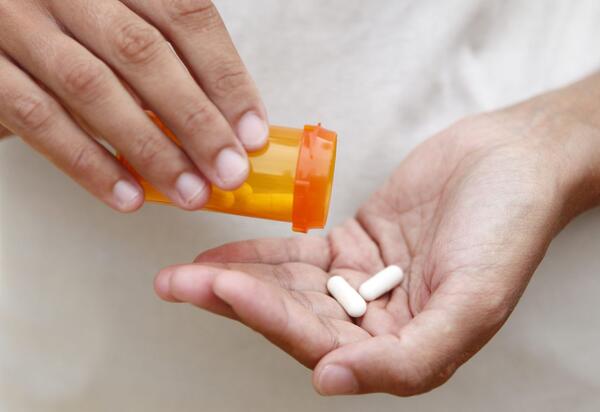
What do substandard or falsified drugs consist of?
Substandard and falsified drugs pose a significant threat to global public health, as they compromise the effectiveness and safety of medical treatments. These terms are often used interchangeably, but they refer to distinct issues in the pharmaceutical industry. Substandard drugs are those that do not meet the quality standards set by regulatory authorities, while falsified drugs are intentionally misrepresented with regard to their identity or source. Both types of drugs can have severe consequences, ranging from treatment failure to adverse reactions and even death.
Substandard drugs encompass a range of deficiencies in quality, formulation, and manufacturing. These deviations may occur at any stage of the drug production process, from the sourcing of raw materials to the final packaging. Common issues include inadequate amounts of active ingredients, poor formulation leading to improper dosage, or contamination during manufacturing. Substandard drugs may result from errors, negligence, or the use of subpar materials in the production process. Inadequate quality control and poor adherence to Good Manufacturing Practices (GMP) contribute to the prevalence of substandard drugs in certain regions.
Insufficient Quantity or Quality of Active Pharmaceutical Ingredients (APIs)
One key aspect of substandard drugs is the insufficient quantity or quality of active pharmaceutical ingredients (APIs). The active ingredient is the substance responsible for the therapeutic effect of the drug. In substandard drugs, the API may be present in lower concentrations than specified, rendering the medication less effective. This can lead to treatment failure, increased disease progression, and the development of drug-resistant strains of pathogens. In some cases, substandard drugs may lack the necessary bioavailability, meaning the body cannot absorb and utilize the active ingredient properly.
Impurities or Contaminants
Moreover, substandard drugs may contain impurities or contaminants that pose additional health risks. Contaminants can arise from the use of contaminated raw materials, inadequate manufacturing processes, or improper storage conditions. These impurities may include toxic substances, heavy metals, or microbial contaminants, all of which can have harmful effects on patients. Exposure to such contaminants can lead to adverse reactions, exacerbation of existing health conditions, or new health problems.
Falsified Drugs
Falsified drugs, on the other hand, are intentionally misrepresented and may involve criminal activities such as counterfeiting, tampering, or fraudulent packaging. Falsification can occur at various points in the supply chain, from the production site to distribution channels. Criminal networks often engage in these activities to capitalize on the high demand for certain medications or to exploit gaps in regulatory oversight. Falsified drugs may contain incorrect or entirely different active ingredients, posing serious risks to patients who rely on them for treatment.
Lack of Active Ingredients
In some instances, falsified drugs may lack any active ingredients, essentially rendering them placebos with no therapeutic value. This is particularly concerning for patients with life-threatening conditions who depend on the efficacy of their medications. Falsified drugs can contribute to the spread of drug-resistant strains of pathogens, as inadequate treatment allows the survival and proliferation of these strains.
Broader Consequences
The consequences of substandard and falsified drugs extend beyond individual health risks. They strain healthcare systems by increasing the burden of treatment failures, adverse reactions, and the need for additional medical interventions. Moreover, these issues erode public trust in healthcare systems and pharmaceutical products. Patients who experience treatment failure due to substandard drugs or suffer adverse effects from falsified medications may become hesitant to seek medical help, leading to delayed or incomplete treatment.
Addressing the Challenges
Addressing the challenges posed by substandard and falsified drugs requires a multi-faceted approach. Strengthening regulatory frameworks and enhancing the capacity for inspections and drug quality control measures are essential steps. Collaboration between governments, pharmaceutical companies, international organizations, and law enforcement agencies is crucial to combat the illicit trade of falsified drugs. Additionally, improving public awareness and implementing traceability measures, such as serialization and track-and-trace technologies, can help consumers identify genuine pharmaceutical products and avoid counterfeit ones.
Obtaining Real-Time Intelligence
Obtaining real-time intelligence that directs remedial action is an essential component of strategies designed to discover and remove SF drugs from the supply chain. Robust solutions must incorporate the testing of products to determine their quality and safety. The targeted introduction of chemical analysis where these medicines are located in the supply chain - hospitals, pharmacies, warehouses, manufacturer inventories and the like - provides actionable information for stakeholders to issue alerts, sequester questionable products for further testing, replace suspect shipments, purchase alternative medicines, and monitor patient status, among other interventions.
ARTiFACTS Verify Platform
The ARTiFACTS Verify platform offers an integrated approach to identifying substandard and falsified drugs that have entered the pharmaceutical supply chain:
- Identification of suspect medicines through on-site testing at any point in the supply chain using paper analytical device technology that is cost-effective and requires minimal training.
- Confirmation of the properties of medicines failing the initial test through further testing at specialist labs, using advanced scientifically recognized techniques, including high-performance liquid chromatography, mass spectroscopy, among others.
- Organisation of all data captured for managing workflows, analysing and reporting results.
- Coverage of over half of WHO's 600 Essential Medicines.
Enhanced data security by recording results on a purpose-built blockchain provides an immutable record of test results, including active pharmaceutical ingredients, product origin, manufacturer and other data essential for effective intervention.
Conclusion
In conclusion, substandard and falsified drugs represent a serious threat to global public health. Substandard drugs result from unintentional deficiencies in quality and manufacturing processes, while falsified drugs involve intentional misrepresentation and criminal activities. Both types of drugs can lead to treatment failures, adverse reactions, and the spread of drug-resistant strains of pathogens. Addressing these issues requires concerted efforts from governments, regulatory bodies, pharmaceutical companies, and the international community to strengthen regulatory frameworks, enhance quality control measures, and combat illicit trade. Only through collaborative and comprehensive strategies can the world hope to mitigate the risks associated with substandard and falsified drugs and ensure the safety and efficacy of pharmaceutical products for all.